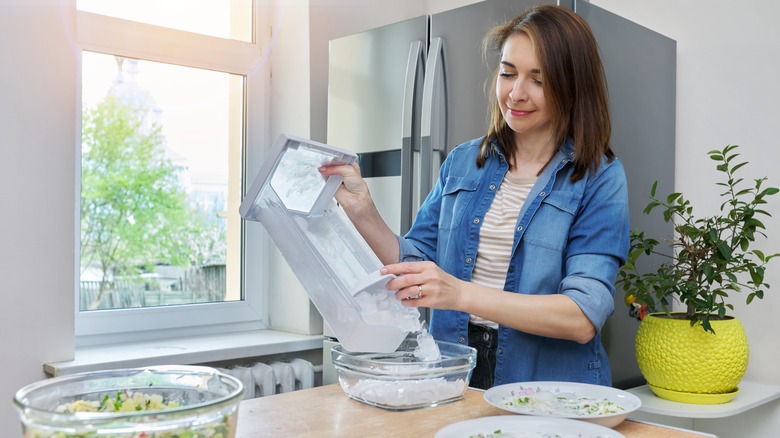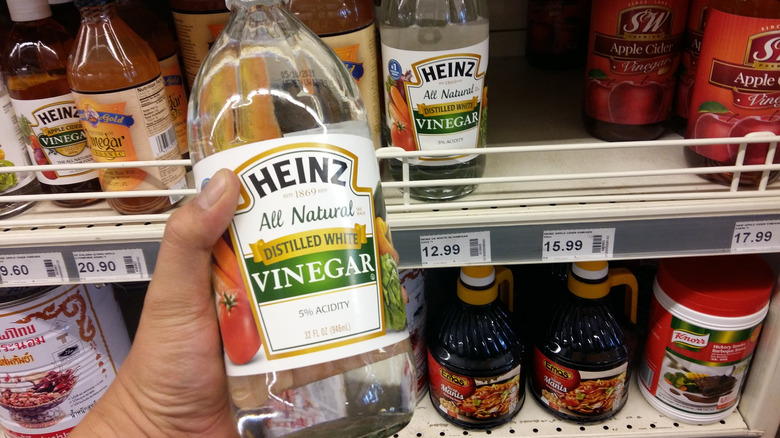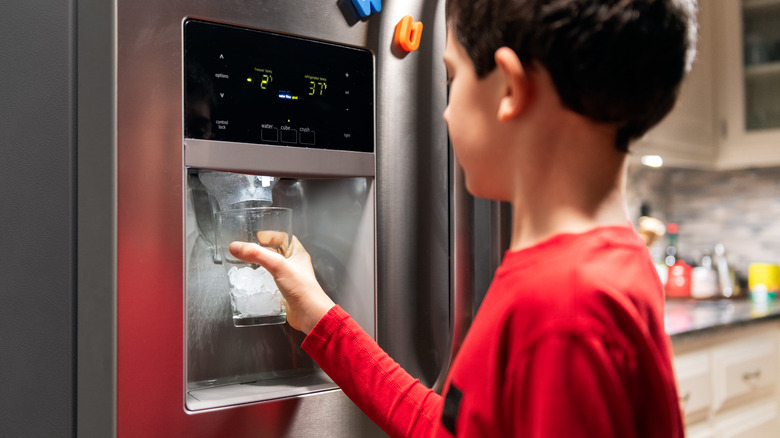How To Clean Your Ice Maker For Quick And Easy Results
A lack of proper upkeep can affect the function of your refrigerator's ice maker, and it can also impact the quality of the ice the machine produces. These appliances must be cleaned regularly, usually once every six months, to ensure good ice quality and proper function. Along with frequency, you must also use the right technique to keep your ice machine in good condition for the long run.
To get started, make sure the device is powered off or unplugged. Next, remove the ice compartment from the refrigerator and transfer any remaining cubes to the freezer. Combine mild dish soap and water and use it to clean the inside of the ice box. Feel free to use a sponge, brush, or cloth to remove grime from the interior of the box. Be sure to rinse away any lingering soap residue after cleaning and dry the ice box thoroughly before replacing it and powering the device on. Now you can turn your attention to descaling the ice machine, another crucial aspect of maintenance.
Tips on descaling your ice maker
Scale is a whitish residue that builds up within your ice maker. Descaling entails applying a special cleaning solution capable of removing tough residue from different components of the ice machine. There are plenty of commercial descalers on the market designed for use with ice makers. However, you can also create your own cleaning solution using basic household ingredients.
The solution should consist of one portion of white vinegar and ten portions of water. Once you've created your cleaning solution, deposit it into the ice machine's reservoir. If you're not sure how to locate the reservoir, consult your owner's manual for more information. Some ice makers have cleaning features, which you can run while the white vinegar solution is in the reservoir. Otherwise, engage the ice-making cycle as you normally would, as this will circulate the solution through different components. Subsequent cycles will also be needed to ensure all residual cleanser is removed before fresh ice is made.
Why water quality matters to your ice maker
Hard water is a major factor in scale build-up within your ice maker. This issue occurs when the water coming into your home has a higher concentration of minerals, such as calcium and magnesium. Hard water not only increases how often you must deep clean your ice maker, but it also affects operation and causes premature failure of the device. As a result, you should take steps to address hard water in the home to keep the appliance in good shape.
Using a phosphate filter in the device is key, as these filters will trap minerals before they can actually make their way to the ice maker. However, you must change them regularly to ensure they continue to serve their very important purpose. Generally, it's recommended that you change the filter once every six months, but you can consult your user's manual for more specific information. With these steps, you and your family will enjoy clean, refreshing ice on demand.


